Melons are juicy fruit and have a sweet taste. It is a tropical fruit that has flowers. The seeds occupy a small section of the fruit with flesh. High temperature is needed for the early growth and germination of the melons.
If you are living in a cold climate then it is very difficult for you to grow melons but if you grow them in a heated greenhouse then your problem can be solved. Melons need the same requirements which are necessary for cucumbers.
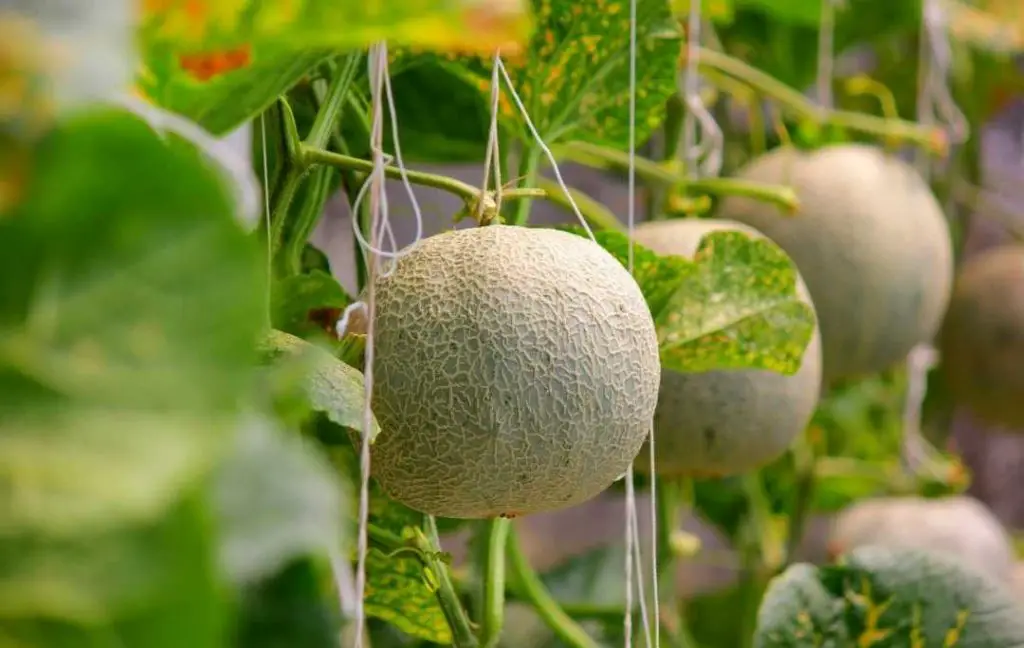
WHEN TO GROW MELONS IN A GREENHOUSE?
Melons can’t tolerate the cold climate so grow them in a heated greenhouse. This fruit should be planted in summer. The best time for growing seeds in a greenhouse from mid-April to the end of May.
TYPES OF CANTALOUPES
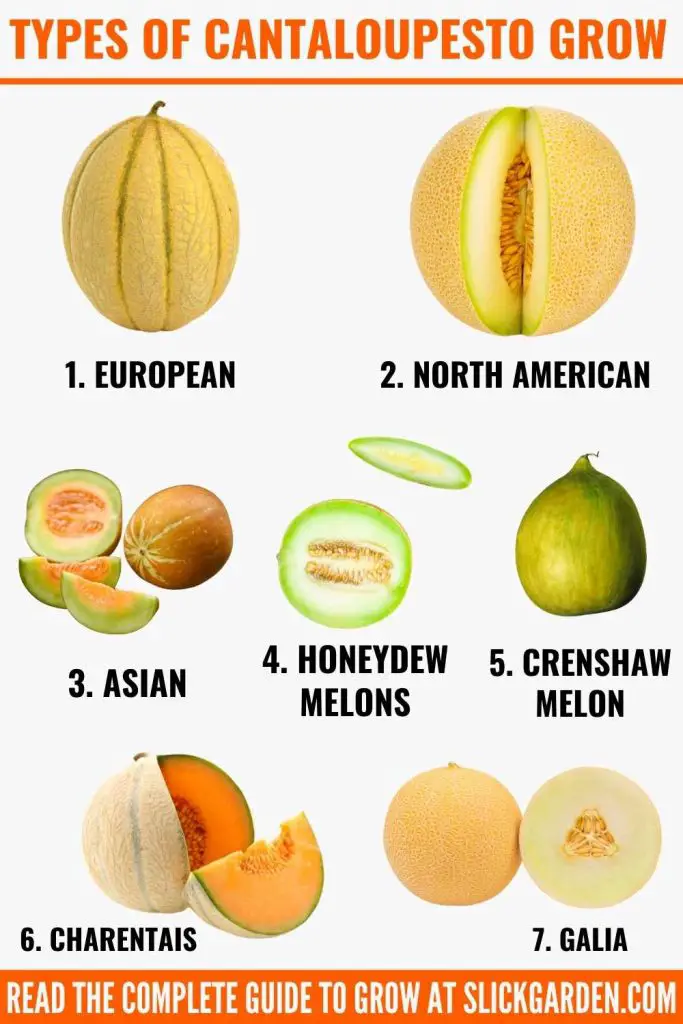
Cantaloupes can be divided into different kinds based on the color of their flesh, size, texture, and taste. Now we will discuss some types of cantaloupe melon.
1- EUROPEAN CANTALOUPE
This type has a grey-green color with tough rinds. The outer skin of the fruit has smooth light colors with green stripes. This type is also known as Cucumis Melo Cantalupensis. The flavor of the fruit is sweet and the smell is musky. It is said that European Cantaloupe is a true cantaloupe.
2- NORTH AMERICAN CANTALOUPE
It is said that North American is not a cantaloupe, it is a type of muskmelon. It has rough yellow skin over a pale yellow shell. Its rind is not like true cantaloupe but its flavor and smell is like true cantaloupe.
The skin of this cantaloupe is of greenish-grey color and the flesh is orange and juicy.
3- ASIAN CANTALOUPE
The color of the flesh of this cantaloupe is pale orange. There is subtle netting on pale green or yellowish skin.
4- HONEYDEW MELONS
The skin of this type is whitish-yellowish with green striations. The flesh inside the fruit is light green. This type of melon its a distinctive smell. It is a good source of vitamin C. This fruit contains 90% of water which means it is best for rehydrating.
5- CRENSHAW MELON
The size of this cantaloupe is very large. Its weight can be 10 pounds. It has juicy, sweet, and peach flesh. It is the sweetest melon which is packed with vitamins, B6, and C. Fruit salads taste great after their addition.
6- CHARENTAIS CANTALOUPE
This type is also known as French cantaloupe. This is a rich source of beta-carotene, dietary fiber, and folic acid. In the summer months, you can enjoy its rich taste. The size of this melon is smaller than other varieties of melon.
7- GALIA CANTALOUPE
The scientific name of this variety is Cucumis Melo var. The color of the sweet flesh is pale yellow or green. It looks like a cantaloupe from the outside but has the qualities of honeydew melon from the inside.
The size of this type is small and you should eat it fresh and chilled. It is a good source of vitamins, minerals, and bioflavonoids. You can easily eat it as a post-dinner due to low calories and low fat.
GROWING MELONS IN A GREENHOUSE
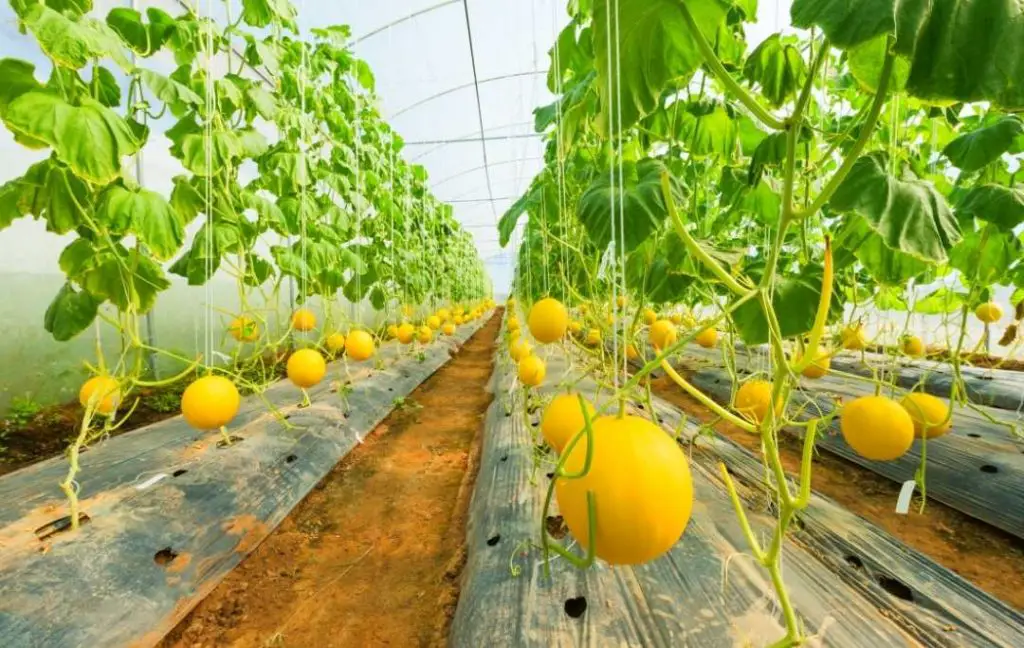
Growing melons in a greenhouse is not a difficult task if you follow the tips and instructions. Here we are going to describe to you in detail how you can manage the growth of melons in a greenhouse.
CHOOSING A SUITABLE POSITION IN A GREENHOUSE
Melons require plenty of sunlight and damp soil but not waterlogged. Make sure your melon plants get medium humidity from your environment. You can use mist sprays from the automatic watering system to maintain humidity in the greenhouse.
Rich and organic soil are needed for their healthier growth, you can add compost and manure to the soil to increase its richness.
SUPPORT
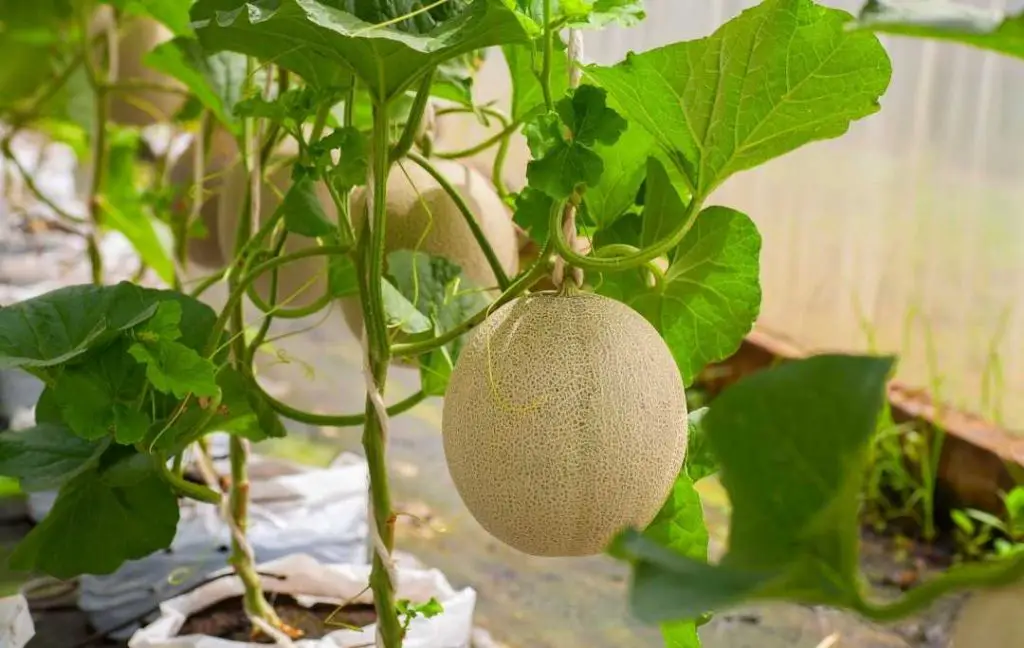
As you know melon is a vine plant. It needs proper support, for this purpose. Remember, support should be arranged before planting so your plants will not face any problems and disturbances later.
Most people don’t have enough space in the greenhouse so you should arrange the support wisely so you can grow more plants in a limited space.
After installing the support, you will get many benefits:
- Firstly, the vines are easily reachable and you can maintain the vining plant easily.
- Secondly, harvesting becomes easier because the fruit is hanging clearly on the vines. You can easily inspect and pick the fruit.
- Thirdly, the plant gets the appropriate amount of air to breathe. Proper aeration is needed for the plants. Oxygen supply will become better after installing the support.
- There is less danger of pests and diseases, if vining plants spread on the ground then maintenance will become difficult.
- The plants will get proper sunlight evenly. No part of the plant is neglected and you will get tasty melons. if you don’t give them support then it is not possible that your plants will get equal sunlight.
Buy Cheap Greenhouse For Growing Fruits And Vegetables
BOTTOM HEAT
High soil temperature is needed at an early stage of the melon plants. In a cold climate, additional heat is needed otherwise melon seeds will fail to germinate. This is the reason that people plant melon seeds in April in the pots. The seedlings will rot off if they don’t get a suitable environment.
ELECTRICAL SOIL HEATING CABLE
This is a modern way to supply heat to your melon plants. This technique works great, you will install 500W of electric soil heating cable below the surface of your melon bed. The size of the cable is 4 to 6 inches.
This is a great way of providing bottom heat to your plants. Switch the cable one week before planting and leave it continuously running for two months. The bottom heat of the soil will help the seeds to germinate perfectly.
SOIL AND PLANTING
Lots of nutrients are required by the deep roots melon plants, roots spread deep in the soil for the search of organic materials. The soil is the medium that provides all the basic organic nutrients to the plants.
As the melon plants have deep roots you can’t grow melon plants in the pots or grow bags. You should grow them in deep soil in the ground in the greenhouse.
If you add manure and organic compost then your soil will not face the problem of depletion of nutrients. Keep an eye on the plants and soil so you will prevent the plants from soil-borne disease.
BOTTOMLESS POT
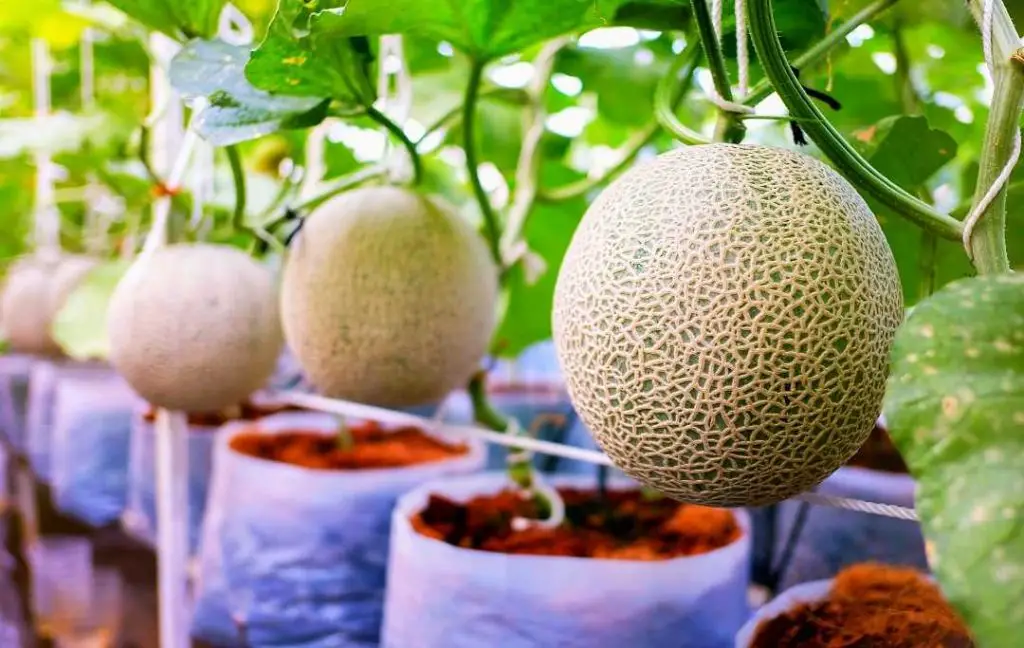
If you want to grow plants in the pots then use bottomless pots. The size of the plastic pot is 8 to 10inch or 20 to 25cm. First, excavate a 3inch deep hole at the bottom of the pot so you can easily bury the pot in the soil in the greenhouse.
After that half fill the pot with the high-quality organic compost. Make sure you are planting the melon plant in disease-free soil. Bottomless pots help to run the roots in the ground to absorb nutrients and moisture. The soil in the bottomless pot is on the soil of the ground, it can be drained easily.
GERMINATING OF MELON SEEDS
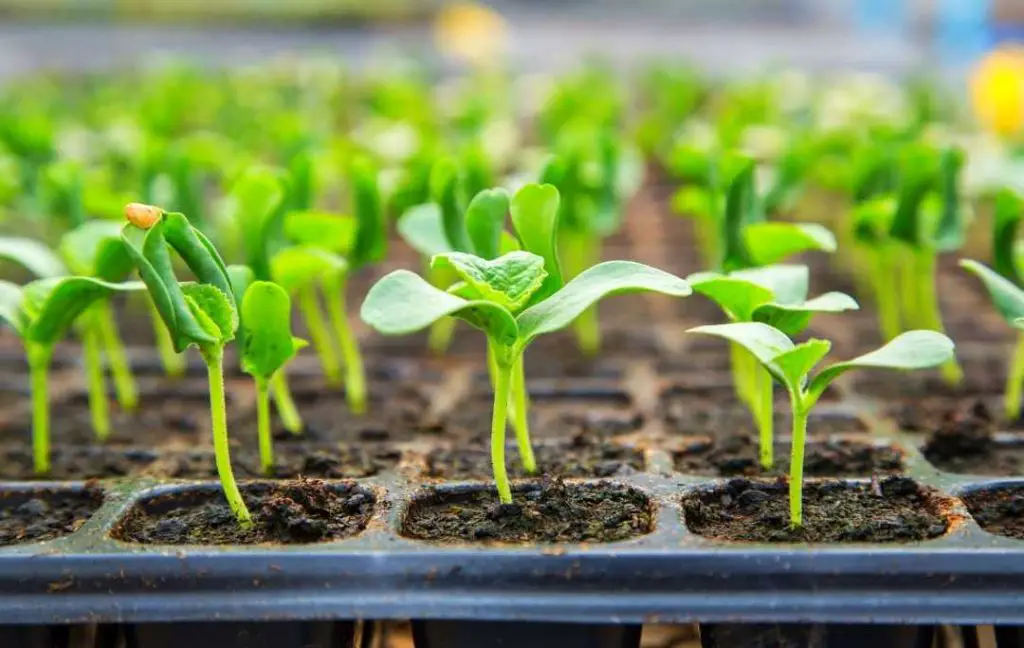
Plants of melon are not commonly available so you should start planting them with seeds. You can buy good quality seeds from a nursery or gardening store. Each melon is packed with seeds, you can also save them to use for planting. This idea is free of cost
Growing melons from seeds can be a little fussy. Follow these instructions so you will get tasty melons that are full of flavor.
- It is better to soak the seeds in lukewarm water for 24 hours before planting. For fast germination, this idea will work great. In this way, the water will penetrate the seeds and results in rapid termination.
- Good quality peat-free compost is best for growing melons.
- It is best to put only one or two seeds in each pot because after germination the size of the melon increases rapidly. Avoid overcrowding of melon because reporting will disturb the roots of the seedlings and it will damage them.
- There should be a space of 1 inch between the top of the compost and the rim of the pot. The reason is that seeds will germinate freely.
WATERING
The automatic watering system is best for your greenhouse. This system will supply 1 liter of water in one minute. One nozzle is attached to each pot of melon. Initially, you will set the time 6:00 am for watering but when you see your plants are getting bigger then set the time twice a day. Because they need more water especially in Summer.
FEEDING
The first flowers you see on the melon plant are male. After one week you will see a female plant starting appearing on the plant. Most of the flowers will turn yellow and fall off; only a few will turn into fruit.
After the appearance of the female flower, you can add high potash fertilizer with seaweed extract.
FRUIT DEVELOPMENT AND SUPPORT
The fruit will be ready in sequence and when ready you can harvest the fruit. Traditionally, you can provide support by growing them on wires, you can make a sling by tying netting or stocking, this will help to protect the melon from falling when they ripen. The melons are heavy and they can fall and bruise so support is very important in their case.
HARVEST
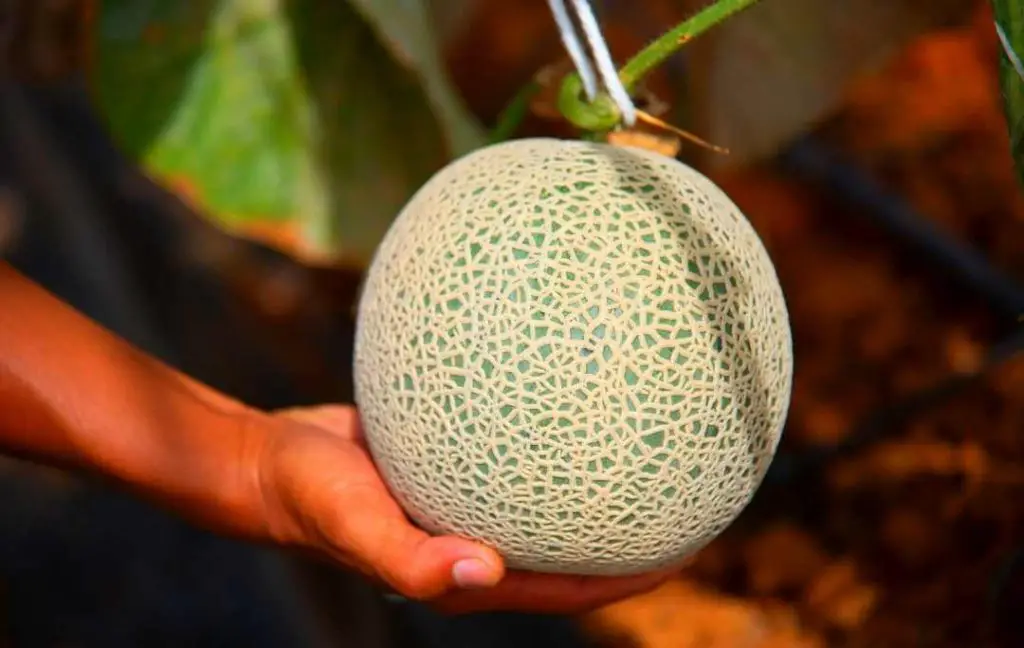
We are not growing melon for its beautiful leaves but for getting fresh and juicy fruit. Growing melon is not an easy task but the result is awesome. Homegrown melon is different from shop-bought melons.
The maturity time of melon depends on the variety which you are growing, the signs of harvesting are also different for each variety. It is not easy to confirm the melon is ripe for picking. Some general tips will help you.
- The most reliable method for checking the melon is ready for picking is to pay attention to the changes in the surface texture of the fruit. Changes will tell you about the ripeness of fruit, these are measuring scales.
- When the fruit turns yellow and starts producing a distinctive aroma, it means the fruit is ready for harvest.
- If you see the growth of the melon is stop then tap the melon gently to see if you can hear a dull thud.
- If you are not sure and you have a lot of melons in your greenhouse then pick one melon and cut it and check It. This is the simplest way of checking the ripen fruit.
- When the melons are ripe, you can leave them on the vine till harvest. After harvesting, if you are not ready to eat the fruit then keep it in the refrigerator so you will get a fresh taste of it.
- Don’t let them on the vine for too long because the cracks will start developing and in the end fruit will fall off from the tree. These cracks can be seen close to the stem.
Buy Cheap Greenhouse For Growing Fruits And Vegetables
